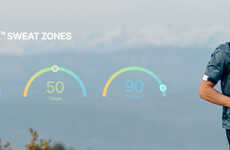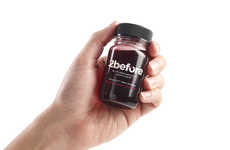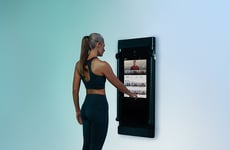
Not Banned
Jeremy Gutsche — September 23, 2006 — Lifestyle
References: go2altitude & gizmag
Active hypoxic training is a drug-free alternative to accelerating endurance performance. Essentially, you simulate training at different altitudes by controlling the density your oxygen intake. The training method has recently been the focus of a lot of attention as the World Anti-Doping Agency has decided not to ban the practice.
From Giz Magazine:
The Executive Committee of the World Anti-Doping Agency (WADA) has decided not to ban Hypoxic Training systems and has not added artificially-induced hypoxic conditions to the 2007 List. The Committees found that the method was performance enhancing, determined that the methodology was contrary to the spirit of sport, raised some concerns but was inconclusive about the method's threat to athlete health. A substance or method may, but is not required to, be added to the Prohibited List if it meets two of these three criteria. There's been a lot of discussion regarding the preliminaries for this decision and the subsequent misinformation surrounding the committee's determination that Hypoxic Training is contrary to the spirit of sport. Here are a few excellent resources for those whose mind is not yet made up: Interview with Dr John Hellemans of the New Zealand Academy of Sport South, links to WADA submissions from various authorities, and an excellent letter from Doriane L. Coleman , Professor of Law at Duke Law School, and an affiliate of Duke Law School's Center for Sports Law and Policy.
From Giz Magazine:
The Executive Committee of the World Anti-Doping Agency (WADA) has decided not to ban Hypoxic Training systems and has not added artificially-induced hypoxic conditions to the 2007 List. The Committees found that the method was performance enhancing, determined that the methodology was contrary to the spirit of sport, raised some concerns but was inconclusive about the method's threat to athlete health. A substance or method may, but is not required to, be added to the Prohibited List if it meets two of these three criteria. There's been a lot of discussion regarding the preliminaries for this decision and the subsequent misinformation surrounding the committee's determination that Hypoxic Training is contrary to the spirit of sport. Here are a few excellent resources for those whose mind is not yet made up: Interview with Dr John Hellemans of the New Zealand Academy of Sport South, links to WADA submissions from various authorities, and an excellent letter from Doriane L. Coleman , Professor of Law at Duke Law School, and an affiliate of Duke Law School's Center for Sports Law and Policy.
Trend Themes
1. Active Hypoxic Training - There is an opportunity for fitness and sports equipment companies to create innovative products that allow individuals to safely participate in active hypoxic training.
2. Drug-free Endurance Training - There is an opportunity for health and wellness companies to create innovative products and services that offer a natural and drug-free alternative for endurance training and athletic performance.
3. Alternative Training Methods - There is an opportunity for training and coaching services to incorporate alternative and safe methods, such as active hypoxic training, to enhance athletic performance and endurance.
Industry Implications
1. Fitness Equipment - Fitness equipment manufacturers can leverage the trend toward active hypoxic training by developing innovative equipment and technologies that simulate high-altitude conditions.
2. Sports Equipment - Sports equipment manufacturers can create products designed specifically for active hypoxic training, such as masks or oxygen tanks, to enhance athletic performance and endurance.
3. Health and Wellness Services - Health and wellness services can provide alternative training methods, such as active hypoxic training, to offer natural and drug-free solutions for individuals seeking to enhance their fitness and athletic performance.
2.7
Score
Popularity
Activity
Freshness























